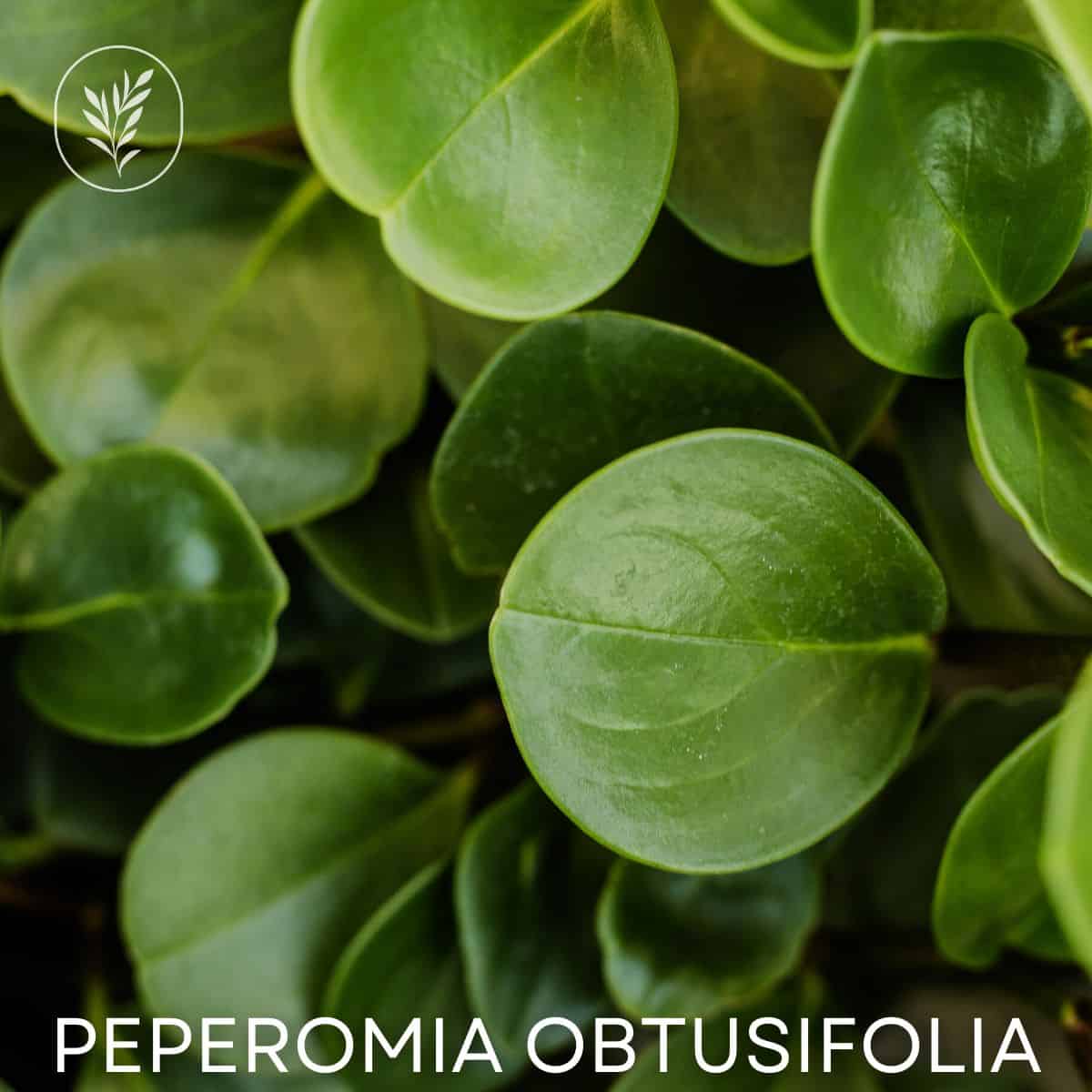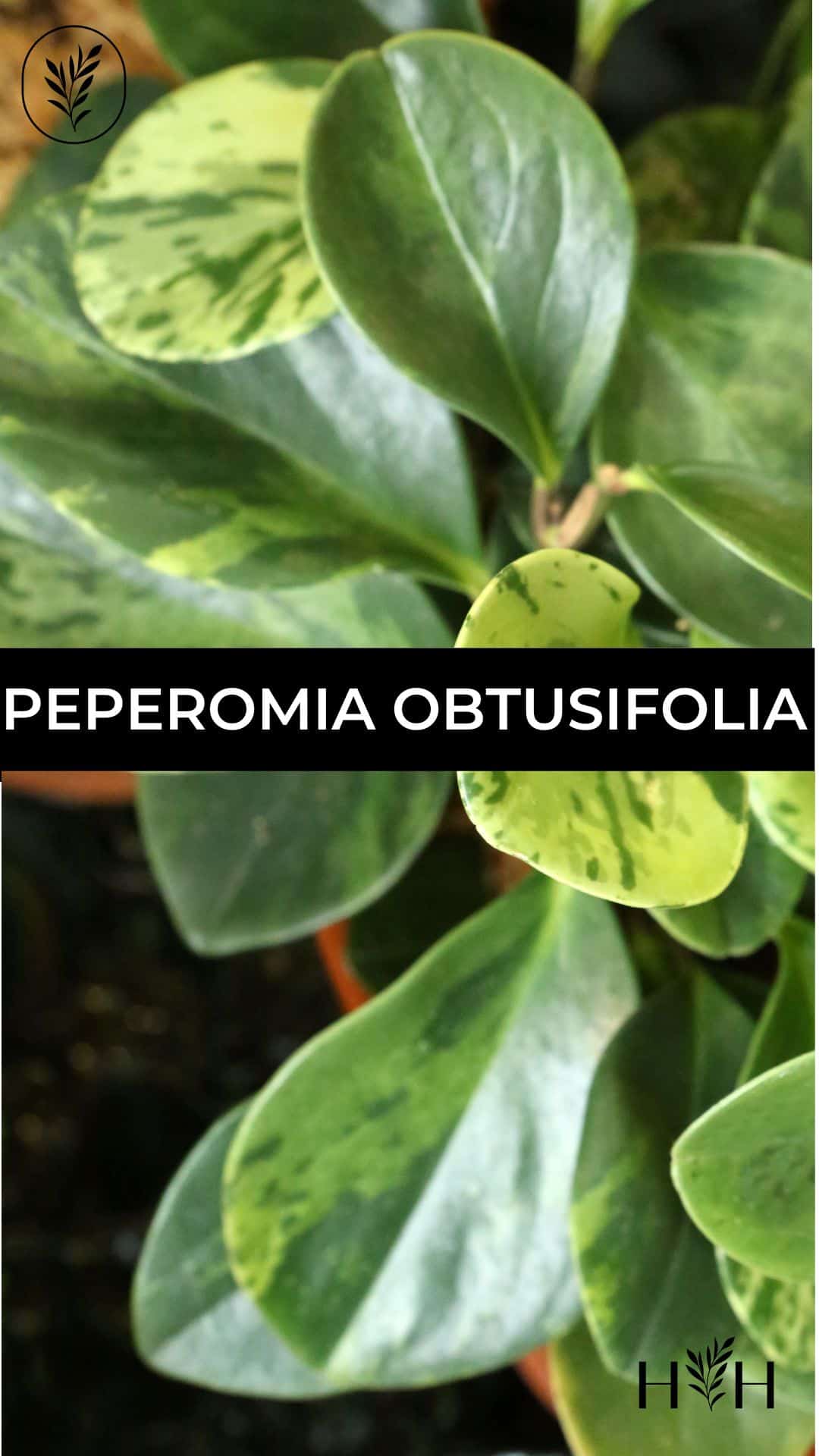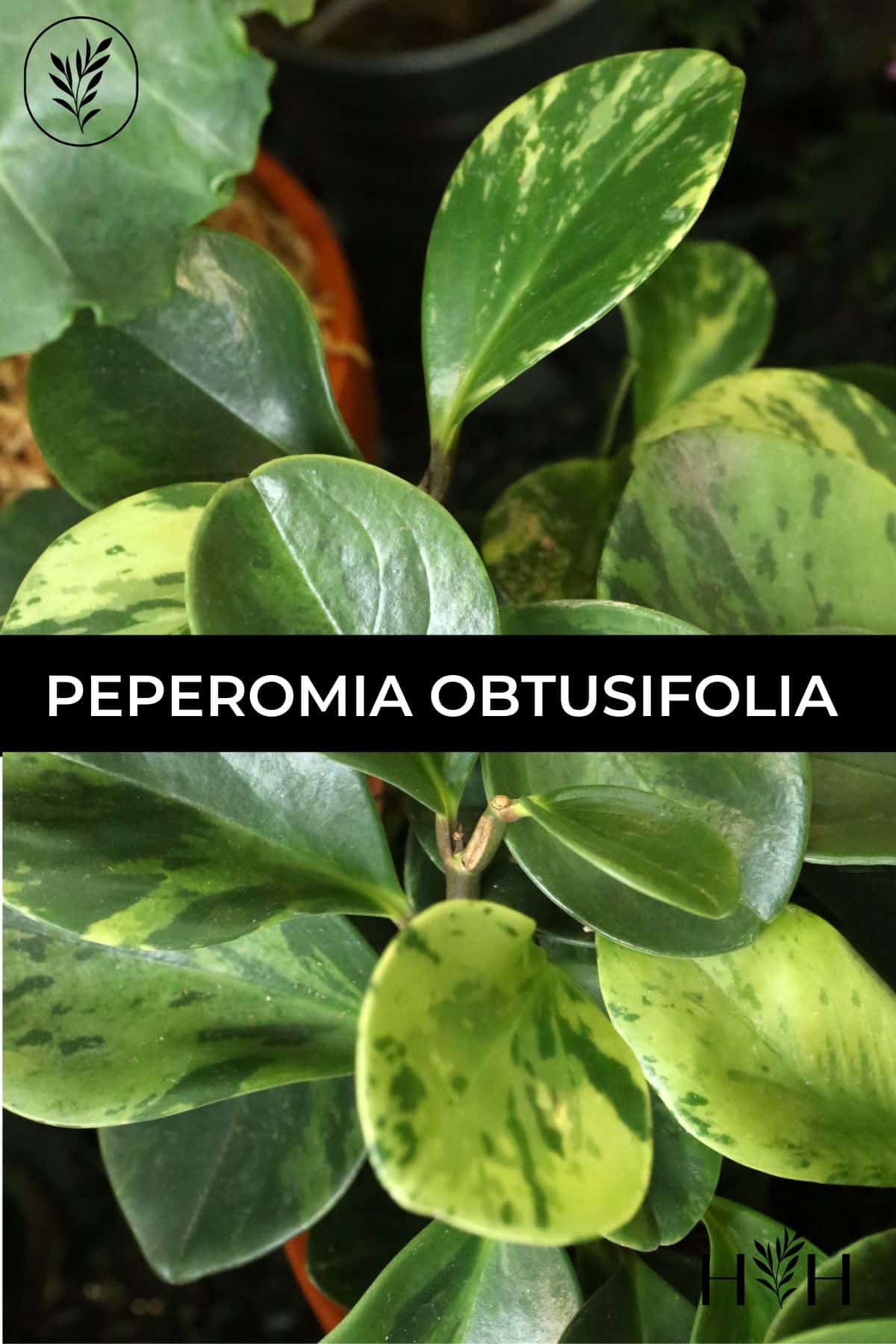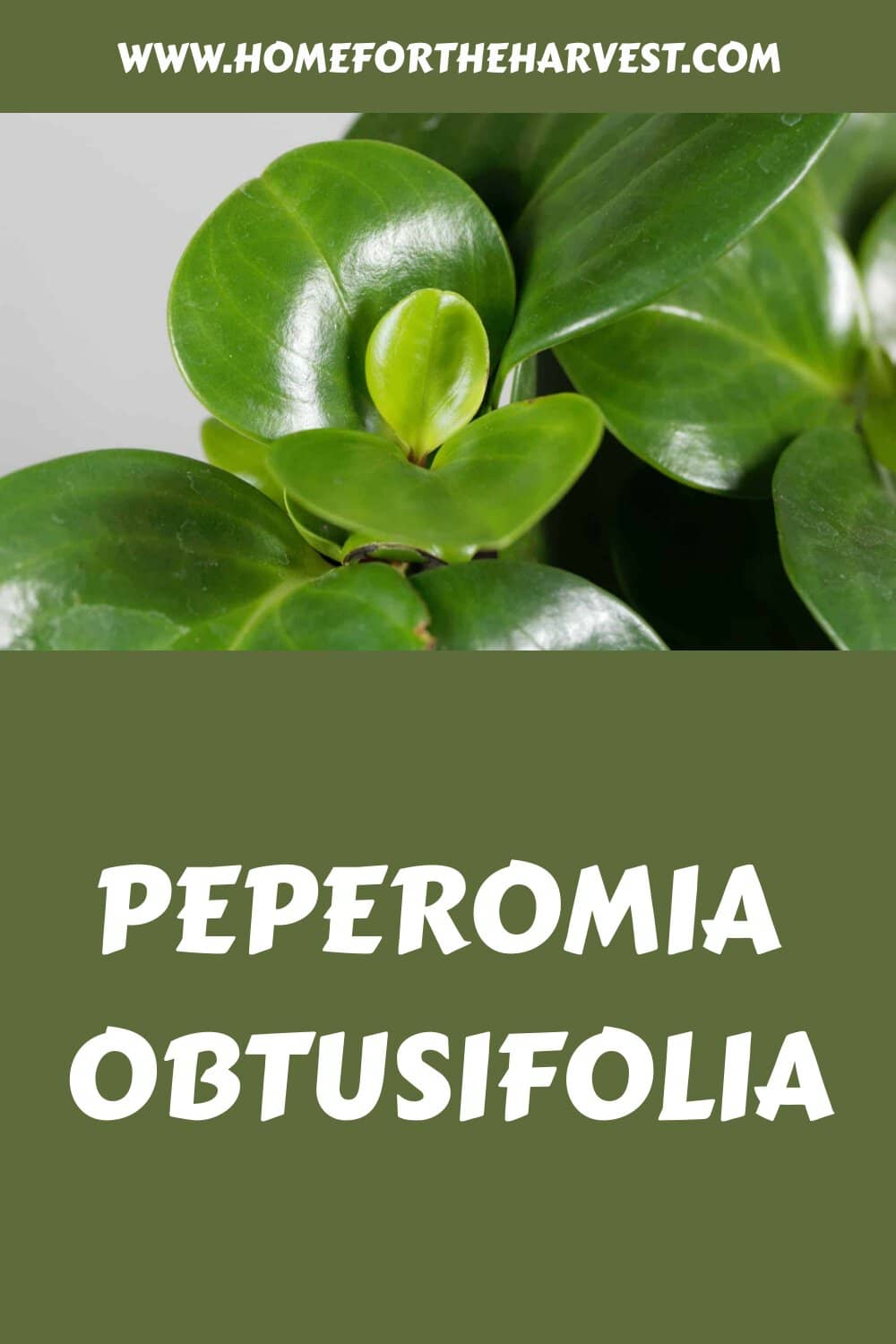Finding a good houseplant that looks pretty and is easy to care for can be a little complicated. Along with all the flowers, adding Peperomia Obtusifolia to your row of houseplants would be a fantastic idea.
Peperomia obtusifolia, also known as Baby Rubber Plant or Oval-Leaf Peperomia, is a gorgeous houseplant that is easy to take care of. Grown for its large, shiny, deep-green trailing leaves, this evergreen perennial is a perfect low-maintenance indoor plant. Peperomia obtusifolia is native to the Gulf Coast and is the most popular Peperomia species in cultivation.
This plant will add some fun variety to your home and is surprisingly easy to care for. Read on to learn all about Peperomia obtusifolia!
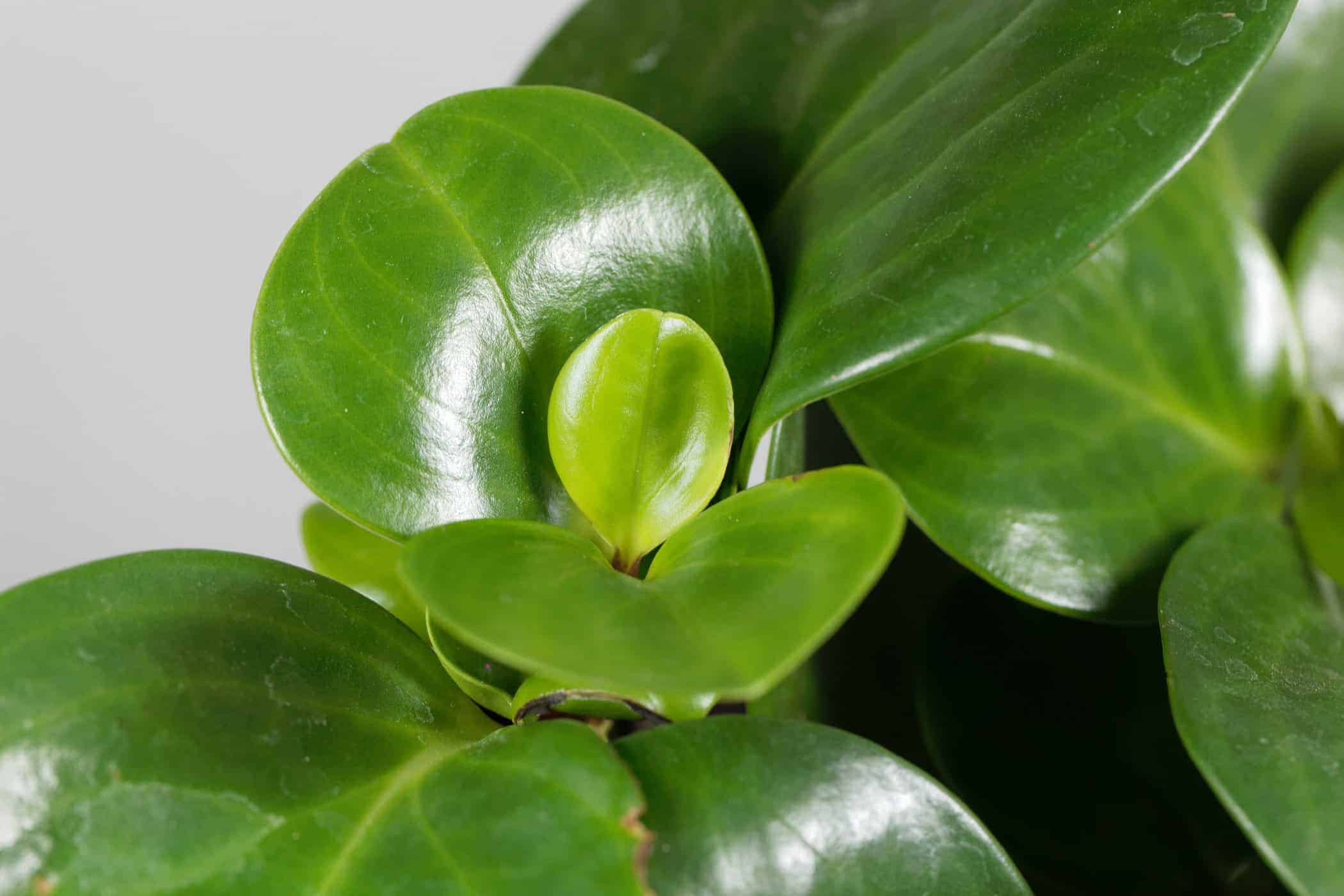
Peperomia obtusifolia basics
Peperomia obtusifolia is a low-growing flowering evergreen perennial plant. Native to areas of Florida, Mexico, and the Caribbean, this plant is an epiphyte that tends to grow along and up old tree trunks in the understory of humid rainforests. Peperomia obtusifolia is the most popular species of Peperomia in cultivation (source: University of Florida).
Peperomia Obtusifolia is sometimes given the common name of “Baby Rubber Plant” or “Oval-Leaf Peperomia”. They are also sometimes referred to as “Radiator Plants”. These plants can grow to be about a foot tall but are generally around 6″-8″ in height. Sometimes they grow upwards, but they tend to be vine-like and sprawl outwards rather than upwards.
Peperomia Obtusifolia does have small flowers that bloom from April to December. However, these plants are grown mainly for their attractive dark-green leathery foliage. Peperomia obtusifolia received the RHS Award of Garden Merit in 1993.
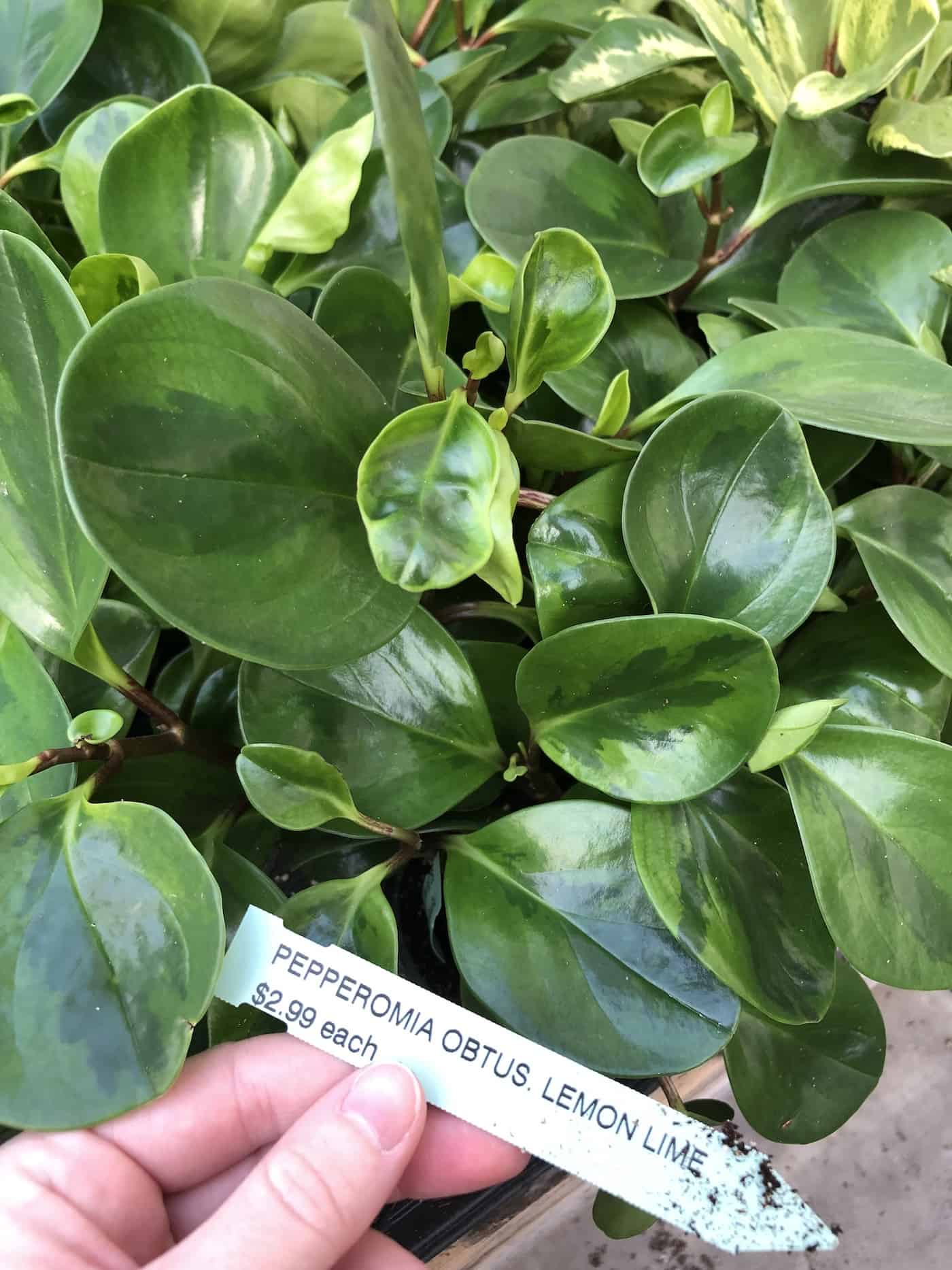
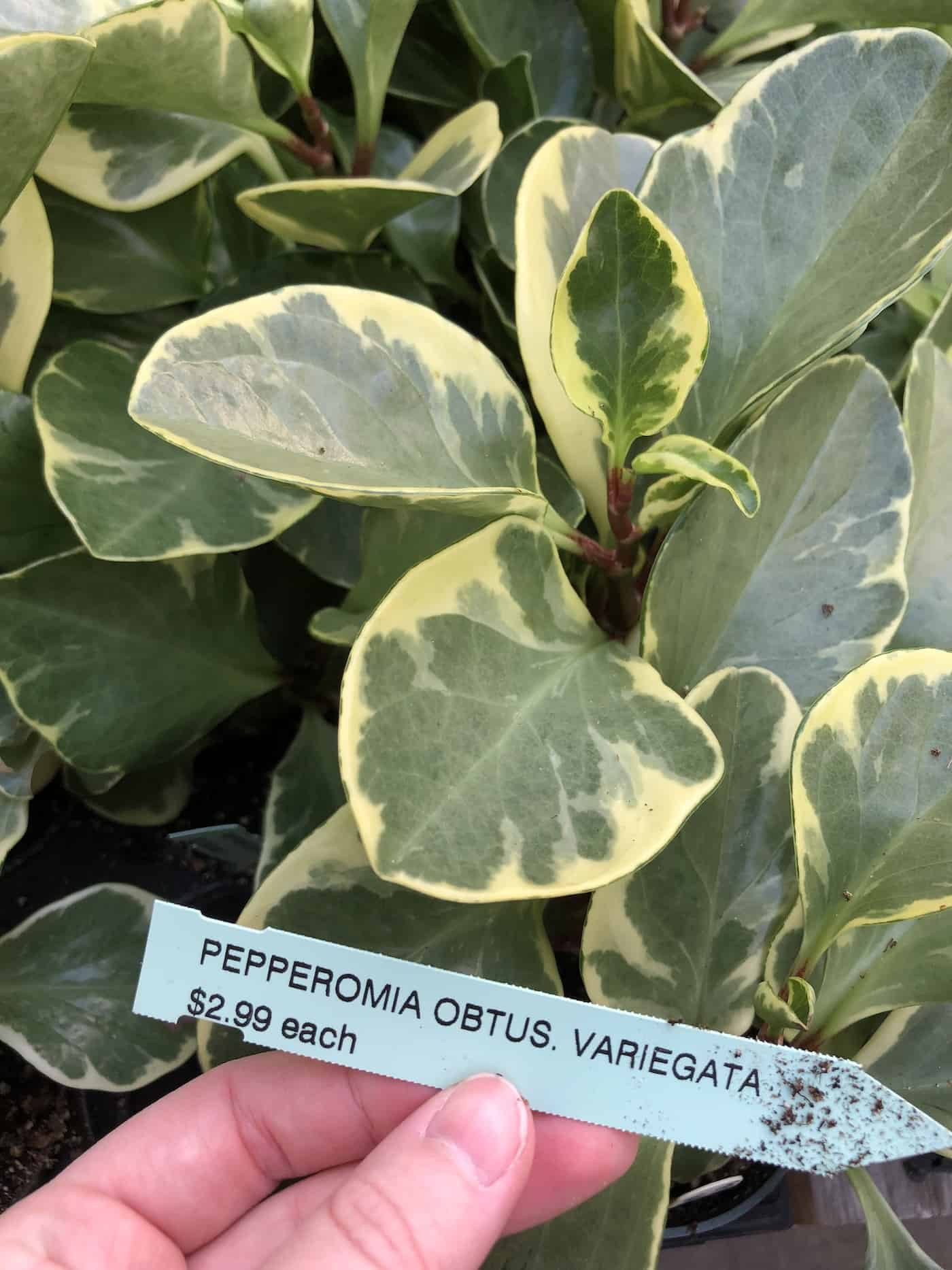
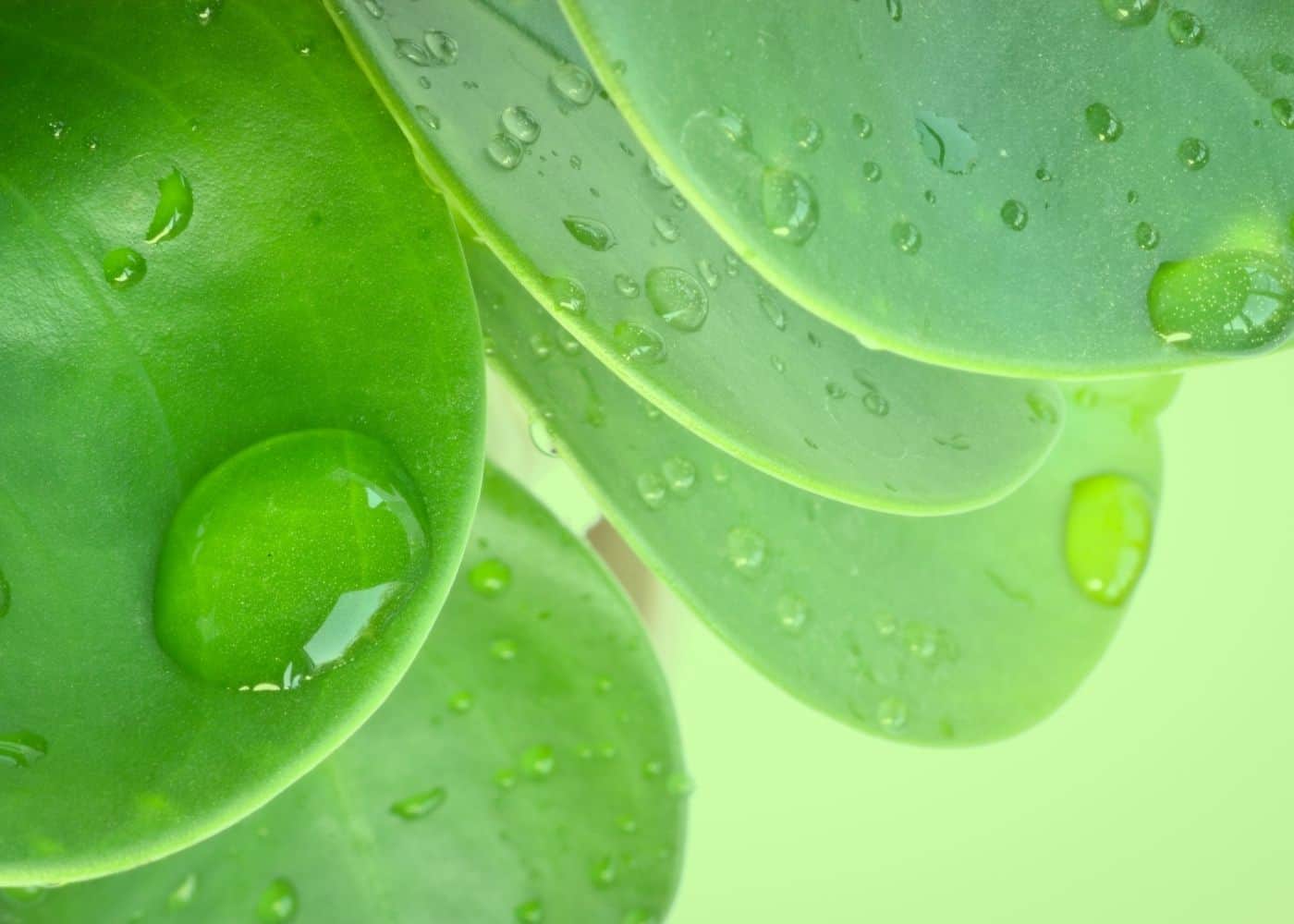
Peperomia obtusifolia care
Now that you know the basics of Peperomia obtusifolia, let’s talk about how to care for this beautiful houseplant.
Sunlight requirements for Peperomia obtusifolia
One of the things these plants need is sunlight. What you don’t want to do for your Peperomia Obtusifolia is put it in hot, direct sunlight. Instead, these plants should be put in medium to bright indirect sunlight. Too much direct sunlight will cause the plant’s leaves to wither and possibly burn. Look for a spot that’s bright but not directly in the sun.
Watering Peperomia obtusifolia
Another basic Peperomia obtusifolia need is water. You should water your Peperomia Obtusifolia 1-2 times per week. You want to make sure to let the soil go dry between waterings. If you water this plant too often, it may develop root rot (which can be fatal to this plant).
The main thing that can go wrong with Peperomia Obtusifolia is overwatering. The local humidity and how much sun your plant gets are important factors you should consider when figuring out how much water your specific plant needs. Another factor to consider is the time of year. In winter you should water your Peperomia Obtusifolia less often than in the summer, every 2 weeks or so.
Overall, it is fairly easy to keep this houseplant healthy and happy.
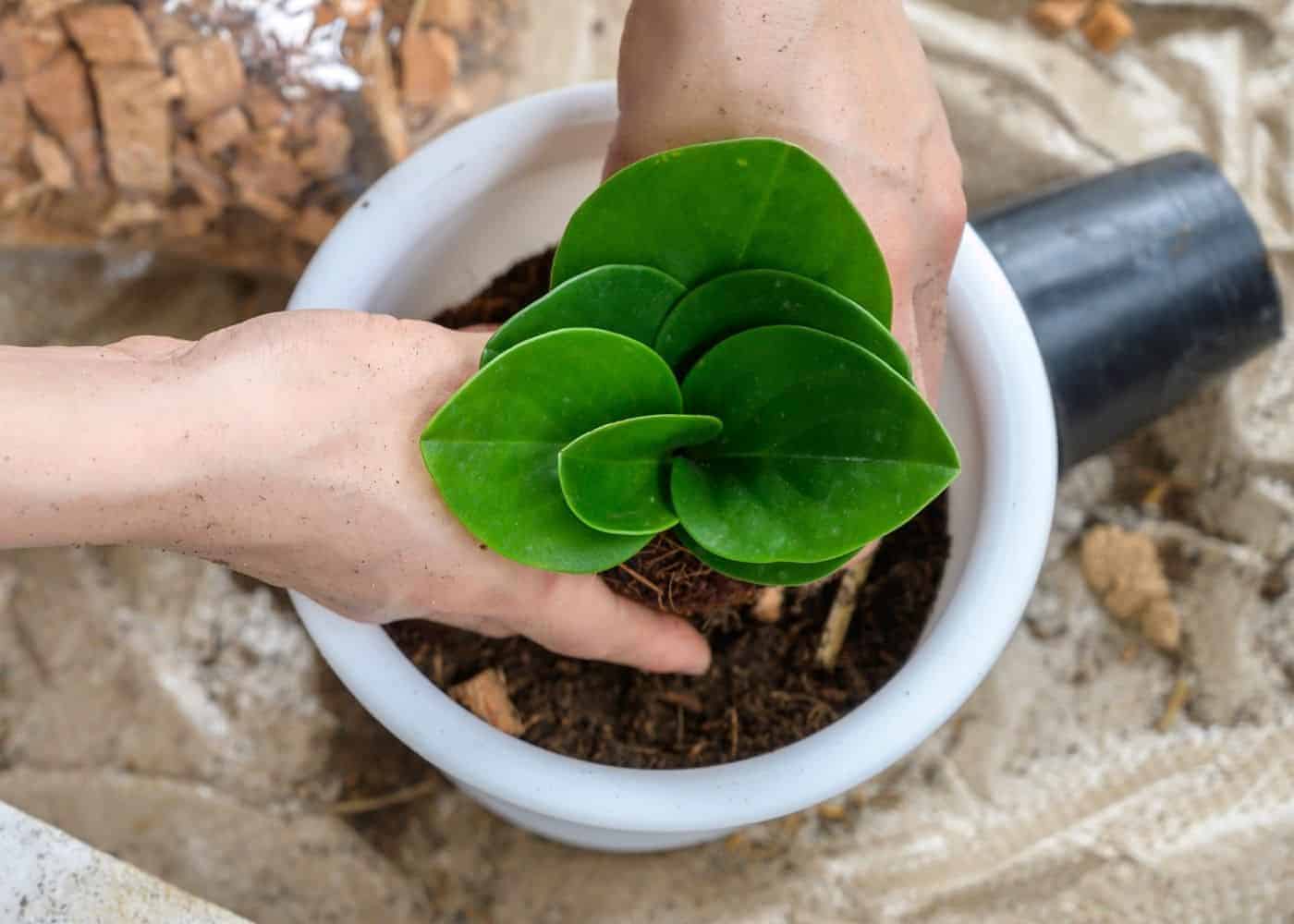
Repotting Peperomia obtusifolia
Peperomia Obtusifolia plants are typically repotted every year or two as they outgrow their planter pots. The best time for repotting is in the spring (if possible). These small plants are generally potted up into a planter that’s about 2″ wider than the previous planter. Choose a planter with a drainage hole, as this plant does not like to sit in standing water.
Choose a high-quality potting mix that retains some water while also allowing excess water to drain out. Use fresh potting mix for small indoor potted plants whenever possible.
Start by removing the Peperomia Obtusifolia plant from its existing planter. Look at the roots and gently loosen any thick roots that are circling around the outside of the root ball. Trim off any roots that look dead or diseased. Then place the root ball into the new planter.
Look at the level of the plant where the stems meet the soil in comparison to the level of the outer rim of the new planter. The base of the plant’s stems should be about a half-inch to one inch below the rim of the planter. If the plant is sitting too low, prop it up by putting some fresh potting mix below the root ball. Once the base of the stems is at an appropriate level, backfill the rest of the planter with potting mix. Water thoroughly after re-potting.
Peperomia obtusifolia propagation
Peperomia Obtusifolia is easy to propagate via stem-tip cuttings, leaf-petiole cuttings, or by division. This plant is one of the best trial plants for new gardeners learning about plant propagation.
Leaf propagation
The first way to propagate your Peperomia Obtusifolia is by a process called leaf propagation or leaf cutting. Simply cut off a leaf where it meets the plant’s stem. Dip the stem in rooting powder and stick that end in the soil, leaving the leaf above ground.
Stem cutting
The next propagation method we will talk about is stem cutting. To do this you start by cutting a stem at a joint. Next, take away all but the top few leaves. Then, put the stem in potting soil (you can use a rooting hormone if desired). Water the new plant consistently.
Plant division
Another way to propagate this plant is plant division. Plant division is when you cut the plant into two or three sections. While re-potting the plant, take a look at where the stems meet the soil. Look for any potential splits where the plant can be divided into 2-3 different plants. Carefully pry or cut apart the sections. Re-pot each divided section into its own pot and water thoroughly.
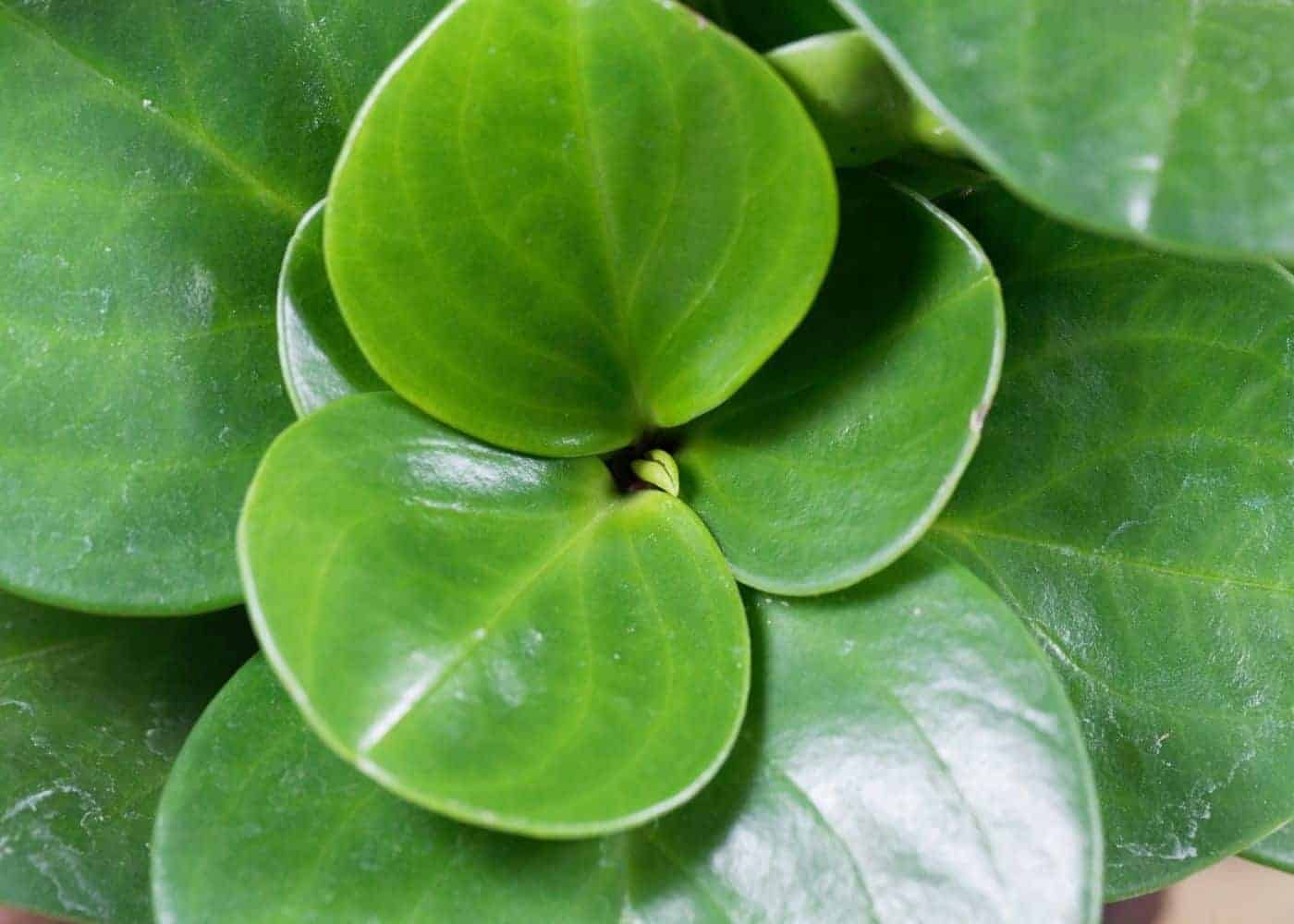
Common pests and diseases that affect Peperomia obtusifolia
There aren’t any really major problems that affect your Peperomia Obtusifolia, but it can still be affected by insect pests and root rot.
Pests that can affect Peperomia obtusifolia
- Spider mites
- Mealybugs
- Red spiders
If your plant is affected by any pests, start by washing the stems and leaves with soapy water (rinse off afterward). Then use neem oil or an organic insecticide regularly to get rid of them.
Diseases that can affect Peperomia obtusifolia
Next are the diseases that affect Peperomia Obtusifolia. The main things that affect this fun houseplant are fungal diseases, like root rot. The main cause of this would be overwatering. If the soil is oversaturated, the water sits, and fungal diseases often develop.
Start treatment by repotting the plant into a fresh, almost-dry potting mix. Decrease regular watering. If another disease is suspected, treat the plant with an organic fungicide.


